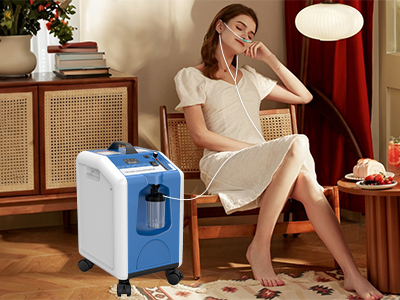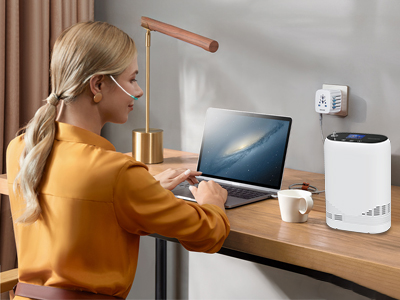30 Oct 2023
In times of emergency, being prepared can be a matter of life and death. For individuals who rely on oxygen therapy, understanding how to use an oxygen concentrators in an emergency is a critical aspect of preparedness. Oxygen concentrators are essential medical devices that can be a lifeline during emergencies.
How Oxygen Concentrators Work
To effectively use an oxygen concentrator in an emergency, it's crucial to grasp the device's operation. Oxygen concentrators work by drawing in ambient air, filtering out impurities, and delivering concentrated oxygen to the user.

Components and Functionality
1. Compressor The compressor in an oxygen concentrator is responsible for pressurizing the air and facilitating the filtration process. Understanding its role is key to comprehending the device's functionality.
2. Sieve Beds Sieve beds trap nitrogen and other gases to produce high-purity oxygen. Familiarity with these critical components is essential for emergency usage.
3. Oxygen Sensor Oxygen sensors monitor and maintain oxygen purity. Knowing how they work ensures that the oxygen concentration remains at an appropriate level.

Emergency Oxygen Safety
Identifying Emergency Scenarios Recognizing emergency situations that may necessitate the use of an oxygen concentrator is the first step. These can include power outages, natural disasters, or sudden equipment failures.
Ensuring a Reliable Power Source
1. Backup Generators For home use, having backup generators that can power the oxygen concentrator during a power outage is crucial. This ensures continuous oxygen supply.
2. Battery Backup Systems Battery backup systems provide an additional layer of protection, particularly in situations where generators are not an option.
Emergency Oxygen Setup
Proper Placement The concentrator should be positioned in a well-ventilated area. During an emergency, placing it near a window or another source of fresh air can be vital.
Initial Start-Up Procedures
1. Powering On the Concentrator Knowing how to safely power on the concentrator, even in an emergency with limited lighting, is essential. Keep a flashlight or headlamp handy for this purpose.
2. Adjusting Flow Rate Being able to quickly adjust the flow rate to the prescribed level ensures that the patient receives the right amount of oxygen without delay.
Maintenance and Safety Checks
Regularly maintaining the concentrator and conducting safety checks is crucial, even in emergency situations. Ensure the device is clean and free from obstructions.
Oxygen Storage and Transport
A.Portable Oxygen Concentrators For those dependent on oxygen therapy, having a portable oxygen concentrator on hand can be a lifesaver during evacuations or mobility needs in an emergency.
B. Emergency Oxygen Supply Maintaining an emergency oxygen supply, whether in the form of portable tanks or concentrator batteries, is essential for uninterrupted therapy.
C. Considerations for Evacuation In emergency scenarios requiring evacuation, have a plan for transporting the concentrator, including backup power and necessary accessories.
Medical Guidance and Monitoring
A. Oxygen Saturation Monitoring Regularly monitoring oxygen saturation levels, using pulse oximeters, helps ensure the patient receives the appropriate amount of oxygen.
B. Contacting Healthcare Providers In emergencies, it's vital to stay in contact with healthcare providers for guidance and to report any significant changes in the patient's condition.
C. Adjusting Flow Rates as Needed Having the knowledge and capability to adjust flow rates based on the patient's oxygen needs is critical for maintaining health and well-being.
Handling Oxygen Concentrator Alarms
A. Types of Alarms Familiarize yourself with the different alarms your oxygen concentrator may produce, such as low oxygen concentration alarms or system malfunction alerts.
B. Responding to Alarms Understanding how to respond to alarms is essential. React promptly to address the issue and ensure the device functions correctly.
C. Troubleshooting Common Issues Have a troubleshooting plan in place for common concentrator issues. This can help you quickly resolve problems and maintain oxygen supply.
Conclusion
A. Staying Prepared with Oxygen Concentrators in Emergencies In times of crisis, preparedness is paramount. Knowing how to use an oxygen concentrator in an emergency ensures the patient's safety and well-being.
B. Enhancing Safety and Well-being in Critical Situations By following the steps and precautions outlined in this article, individuals and caregivers can optimize the use of oxygen concentrators during emergencies, ultimately safeguarding health and improving outcomes.
Keywords: oxygen concentrator
Originally published 30 Oct 2023, updated 30 Oct 2023.